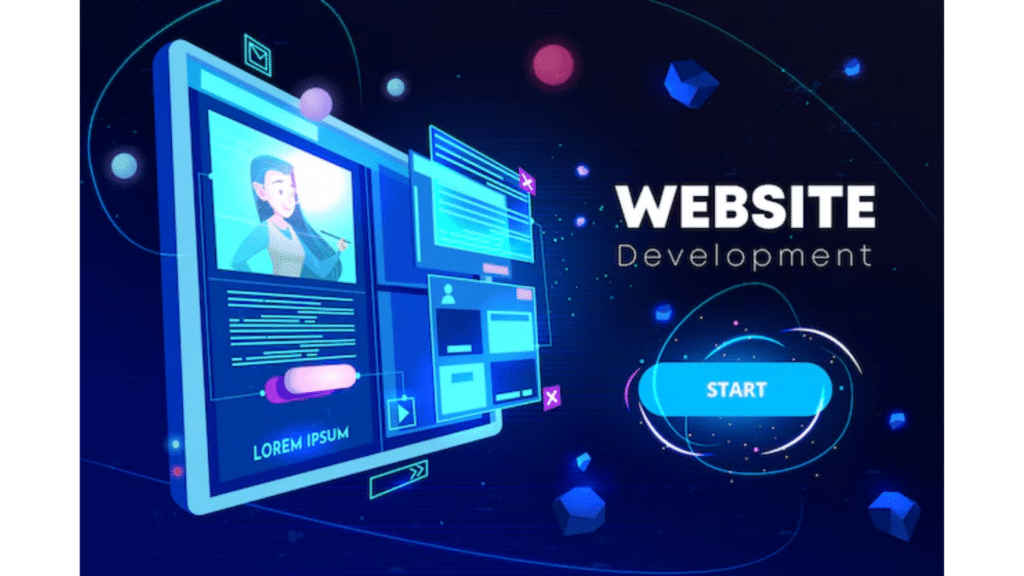Many professionals who embark on working with Internet marketing abandon it soon after the first digital severe campaign. Internet marketing may seem like an easy way to make money, but people soon realize that responsible and diligent work will be required.
Working with internet marketing goes far beyond creating a website or writing articles. In the arsenal of a novice Internet marketer is a wide range of marketing tools, the correct use of which will lead to success. Careful analysis of methods and tools for promotion is a difficult task.
Only by carefully studying internet marketing tools will you be able to create a profitable business on the Internet.
Those who are just getting to know Internet marketing will hear the following phrase at every turn over and over again: test! Internet marketers talk about it all the time. The variety of means of promotion on the Internet is tempting and makes you switch between them in an attempt to test each.
It happens, the marketer does not get instant success from using any tool, abandons it and moves on to a new strategy, then chooses another, and so on. The problem with this approach is that by constantly switching between strategies, you leave no one of the chosen strategies a chance to thrive and be implemented. So check, test, and try all possible options with the chosen tool. So you exclude what doesn’t work and choose what will be effective for your business.
In the early stages of working with Internet marketing, you can’t “row everyone under one comb.” The same strategies may not work the same way for different niches. What works for you may not work for someone else and vice versa.
Self-development of the Internet marketing strategy will take time, but it’s worth it. Focus on 1 or 2 marketing approaches.
Follow this principle, and you will be able to select the most valuable experience of each strategy and build your bulletproof strategy.
Think long-term. Invest wisely in the short term to make money in the long run. Invest in well-designed educational programs, books, and tips and use experts’ help to help you learn faster. Otherwise, you will remain the one who takes everything and does not know how to do anything properly.
Internet marketing can negatively impact when you have invested financially and spent time and effort for little or no profit. But this psychological battle is a critical stage in your development and success.
We’ve compiled a proven sequence of steps to get started in internet marketing:
- Identify the target audience. Find the need and make up for it.
- Don’t sell; help you buy: formulate ATP, describe the customer’s benefits from using your product.
- Arrange the buyers to yourself. Be honest, demonstrate knowledge about the product, talk to customers in the same language.
- Develop and create an easy-to-use website.
- Work on a search promotion (SEO) and connect contextual advertising to drive traffic to your site.
- Form an expert’s reputation.
- Get your hands on your customers with email marketing.
- Increase your revenue through back-end sales and up-sell technologies (uplifting sales).
- Use SMM marketing tools.
- Track progress and make timely changes.
Let’s take a closer look at each step.
1. Identify the target audience: find the need and make up for it
Beginner Internet marketers make mistakes when they first develop a product and then everything else.
Do not trust the whole market research – you get a lot of information with low practical value. Formal studies reflect trends but do not reveal the prospect of market development. They are disconnected from consumers who themselves are not fully aware of their needs. Formal research will not help to beat the competition. You start following the market and will not be any different from them.
Be closer to potential buyers, listen to them:
- Visit forums, feedback on competitors to understand what problems your audience is trying to solve.
- Explore keywords that users are looking for information on. But at the same time, on which not many sites compete.
- Check out the competitors. Go to their sites and notice what they do to meet the needs of users.
So you can create a product for the already formed market and do it better than competitors.
2. Write strong texts

A buyer on the Internet is skeptical, armed with a negative experience.
The purpose of the text is to remove all objections and fears of the buyer, to answer all his questions. Selling text is a sales manager’s substitute. These texts accompany the user throughout the sales funnel, from the moment you visit your site to the moment you make the purchase.
To prevent the selling text from withdrawing objections and the user has bought from you, follow the following steps:
- Call users’ interest with attractive headlines.
- Describe the user’s problems that your product solves.
- Build trust in yourself as a seller who can solve a user’s problems.
- Add feedback from customers who are already using your product.
- Describe the product in detail and its benefits.
- Make a reasonable offer.
- Make a reliable guarantee.
- Create urgency.
In all texts, you should focus the user’s attention on the unique ability to solve their problems or make their lives better. In writing (and in general in the process of marketing), develop a habit of looking at everything through the client’s eyes: “What will I get from the purchase?”.
Please note: to look at everything through the client’s eyes does not mean putting yourself in the customer’s place.
In marketing, the eye can “wash” and risk moving away from customer-oriented marketing towards corporate formalism.
Show your selling text to family, friends, and acquaintances. See how they react, ask if they understand everything, etc.
3. Define your mission
It is essential to decide on the brand and positioning in the market, as it will help you stand out against the background of similar offers. To do this, you need to answer three questions:
- What mission do you want to accomplish?
- What are the core values of your business?
- What sets you apart from other companies offering similar products?
- Answers to questions about who you are, what you are trying to do, and what sets you apart. So you will formulate your UTP (unique product offer), which will be the driving force behind your brand.
Think about the logo, slogan, and mission to strengthen your brand. Remember that mission and values are not a pleasant abstract addition to your image, it is the primary tool of sales and targeting to the audience. After all, it is impossible to please everyone.
4. Develop and run a simple site
You have decided on the market and the product and have consolidated the sale process. Now you’re ready to design a web design. The main thing is not to complicate things. At your disposal, no more than 5 seconds to capture the user’s attention, otherwise you will lose them irrevocably.
Web Apps development
Have a creative idea? Contact us now and
let’s transform it into a Web solution.
How to keep users on the site and bring them to the purchase? Follow the tips below:
- Think about the site’s layout: use simple and popular fonts, make navigation simple and easy for the customer, carefully approach the use of graphics, audio, and video.
- Test the site regularly: optimize page download speed, make sure the site is displayed on all popular browsers, and have a mobile version of the site.
- Gather a subscriber base. Use Opt-In technology with a variety of offerings. This way, you can collect your email addresses for further communication.
- Make it easier to buy – don’t force the user to make more than two clicks from the shopping cart to purchase directly.
5. Work on search promotion (SEO) and customize your content to drive traffic

Contextual advertising (advertising displayed in search results) has at least two advantages over organic traffic:
- 1) Contextual ads appear on pages with search results right away
- 2) Contextual advertising allows you to test a variety of keywords, as well as headlines, prices, and sales options. Not only do you get immediate traffic, but you can also identify conversion keywords.
You can then distribute the keywords on your website by adding them to your texts and code. This will gradually improve your rating in search results.
Get Free quote now!
Have a project in mind? Get in touch for a free consultation and turn your vision into a high-performing web or mobile app!
Next, you can start working directly on SEO promotion.
6. Form a reputation as an expert
People will go to the Internet, first of all, to search for information.
Give them this information for free, spreading it on other sites with a good reputation. This way, you get a lot more traffic and increase your search engine rankings. Always leave a link to your site in any form of content.
How to spread the word about yourself:
- Create and distribute free, high-quality content: articles, videos, or any other content that will benefit your audience.
- Add social buttons. Networks such as “share,” “send to a friend,” and others post them on pages with valuable content on your site.
- Become an active expert in your field, communicating on forums, in comments, and on social networks – there “sit” your potential buyers.
This way, you can attract new readers. The main thing is to remember to add a link to your site. Search engines love referral links from quality sites and will reward you with an increase in issuance.
7. Get your hands on your customers with email marketing
By creating subscription offers, you form a valuable asset of the Internet business. To do this, you can use the site of opt-in technology.
If customers have permitted you to communicate with them via email, it means:
- You’re interested in users. Now you need to hold their attention.
- You have the opportunity to develop long-term relationships with users with the right strategy.
- The results of mailings are 100% measurable.
- Email marketing is a cheap and one of the most effective internet marketing tools.
Don’t forget that every visitor to your site is a potentially hot lead. And there is no better tool than email marketing to convert them into buyers further.
8. Increase Revenue Through Back-end Sales and Up-Sell Technologies
36% of people who have purchased from you will buy from you again if you continue communicating with them.
Develop the lifelong value of each customer.
Do not forget that marketing to make the first purchase by the customer is the most challenging part and the most expensive. So use the following pre-sale technologies to get them to buy from you again:
- Offer products that complement the original purchase.
- Use email marketing – for example, send electronic loyalty coupons.
- Don’t forget to set up a thank you page for your purchase. Here you can post items that may also be of interest to your customers.
Reward your customers for their loyalty, and they will become even more loyal.
9. Use SMM Marketing

Once you’ve seen that the site works well, all the pages are set up correctly; you can deal with the company’s social media profiles. Social media pages are essential for interaction with the audience. And not just because we all have them, we will. It is essential to develop a social media strategy that will focus on specific outcomes and will constantly evolve.
Here are a few questions you need to answer before you start acting in SMM:
- Track progress and make timely changes. How will your social media presence help your customers buy?
- Which platforms will you be active on? Facebook, Classmates, Instagram, or anywhere else? Find out which one (or select multiple) your target audience uses the most, and focus primarily on them.
- What are your goals for working with social media? Help your customers get more information about you and your products? To engage the audience through advertising campaigns or contests? Give you a chance to see your business from the inside out and win customer loyalty?
- What resources are you willing to invest in? Social media needs care, commitment, and plenty of time to get accurate results. Make sure your budget keeps your social media profiles in good condition and regularly interacts with your audience.
10. Analyze the result
Web analytics is needed to see your online activities’ results and understand where the traffic to your site is coming from.
Google Analytics and Yandex. Metric’s analytics tools are easy to set up and tell you how many people visit your site, what pages they view, what actions they do, where they come from, and more. All these indicators are significant for the marketer: they will show what works wrong on your site.
Web analytics reports allow marketers to increase sales and reduce the value of the buyer.
Critical indicators for tracking:
- Unique visitors.
- Conversion percentage (sales, registration, file spike, etc.).
- Popular pages.
- The duration of visitors’ stay on the site.
- Returns to the site.
- Depth of site viewing (how many pages the user has viewed and in what order).
- Geography of visitors.
- Bounce rate (how many visitors leave the site within the first seconds).
If you are selling online, it is also advisable to know:
- The income of your site for 24 hours.
- Keywords, websites, banners, from which visitors come shopping.
- The best-selling products.
Why evaluate these factors? With them in your armament, you will be able to find out:
- The value of the buyer (costs per buyer).
- The importance of specific pages.
- RoI ratio (return on investment) to attract new and returning visitors to the site.
- Its most effective advertising campaigns.
- Which page results in the most significant number of failures.
- Which pages the user viewed before the purchase.
- The average time to make a purchase decision.
Changes in the Internet are happening so fast that 1 year online is about 5 years in the real world. But the principles for the proper start of a successful online business do not change. If you are starting a business on the Internet, follow our tips.
If you’ve already started your e-commerce work, take a quick look at your internet marketing and see if you’ve missed an important step.






